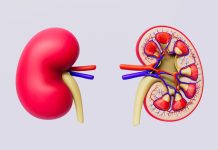
A recent study from the University of Exeter emphasizes the importance of measuring blood pressure in both arms to enhance the diagnosis and management of hypertension, or high blood pressure.
Researchers found that adopting the higher blood pressure reading between the arms can lead to improved hypertension diagnosis and more accurate risk assessment for heart disease.
Examining the Impact of Arm Selection on Blood Pressure Measurement
The study involved analyzing data from 53,172 participants across 23 studies conducted worldwide. Researchers sought to understand the implications of choosing either the higher or lower arm for blood pressure measurement.
Key Findings of the Study
The study’s findings underscored the significance of using the higher arm blood pressure reading:
Reclassification of Diagnosis: When the higher arm measurement was employed instead of the lower arm, approximately 12% of participants were reclassified as having high blood pressure. These individuals would have fallen below the diagnostic threshold if the lower arm reading had been used.
Impact on Diagnosis and Treatment: Failure to measure both arms and consider the higher reading can result in underdiagnosis and undertreatment of high blood pressure. It can also lead to an underestimation of heart disease risks for millions of people worldwide.
Better Prediction of Outcomes: Higher arm blood pressure readings were found to be more predictive of various outcomes, including all-cause mortality, heart disease mortality, and heart disease events, compared to lower arm readings.
The Importance of Assessing Both Arms
The study highlights the crucial role of assessing both arms when diagnosing and managing high blood pressure and heart disease.
Notably, it is challenging to predict which arm will yield the higher blood pressure reading, as some individuals may have higher readings in their left arm, while others may have higher readings in their right arm.
Given these variations, checking both arms is essential to ensure accurate diagnosis and appropriate treatment for individuals with high blood pressure.
Conclusion
Accurate blood pressure measurement is a fundamental step in identifying and managing hypertension, a significant risk factor for heart disease.
The research emphasizes the need to routinely measure blood pressure in both arms and consider the higher reading, as it can lead to better diagnosis, treatment, and risk assessment for heart-related conditions.
Healthcare professionals and clinics are encouraged to adopt this practice to enhance the accuracy of hypertension diagnosis and improve patient care.
Additionally, individuals concerned about their blood pressure should be aware of the importance of having measurements taken in both arms for a comprehensive assessment of their cardiovascular health.
While the study offers valuable insights, further research and clinical validation are necessary to reinforce these findings and their implications for healthcare practices.
If you care about blood pressure, please read studies about Scientists find link between high blood pressure drugs and this skin disease and findings of common high blood pressure medication may not be the best choice.
For more information about high blood pressure, please see recent studies about impact of vitamins on high blood pressure you need to know, and the powerful link between high blood pressure and a potassium-rich diet.
Copyright © 2023 Knowridge Science Report. All rights reserved.



